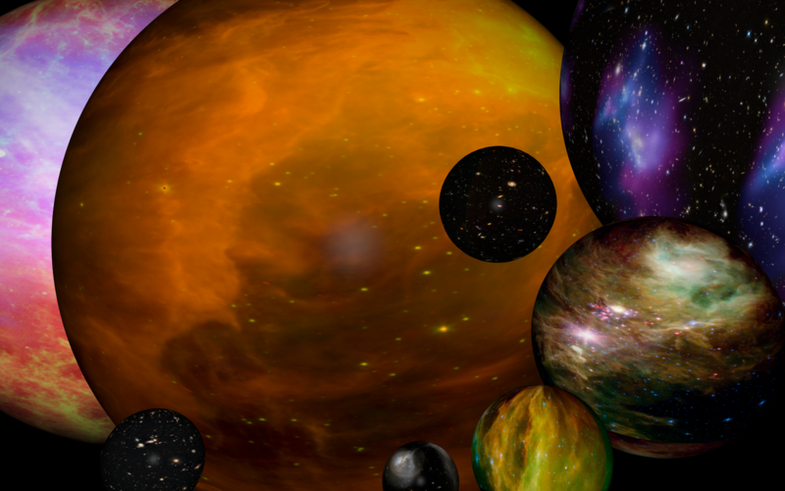Physicists Hope to Catch Neutrons in the Act of Jumping from Our Universe to Another
The notion of multiple universes is one that cosmologists like to theorize about but generally don’t relish proving, mainly because...

The notion of multiple universes is one that cosmologists like to theorize about but generally don’t relish proving, mainly because doing so would be very difficult. But a team of researchers that showed a few years ago how matter might travel between our universe and others now think they ought to be able to observe this phenomenon in action using existing technology, lending credence to the multiverse theory. All they need is a neutron bottle, some neutrons, and a year.
The experiments would require bottling neutrons in an ultracold state, a process that physicists have been performing for years to measure how quickly neutrons decay. These bottles–made of ordinary matter imbued with magnetic fields–are able to trap these super-cooled neutrons and keep them moving slowly enough that they can be observed. Physicists can measure the rate at which these trapped neutrons strike the walls of the bottle and how quickly this rate declines as the neutrons decay.
In a perfect experiment, the neutrons would always decay precisely at a rate equal to the beta decay rate, but this is never the case because neutron bottles aren’t perfect–the rate of decay is always a bit faster, presumably because some of the neutrons escape by means other than decay.
Or maybe they don’t. Michael Sarrazin at the University of Namur in Belgium and a few colleagues have postulated that maybe these neutrons simply depart for another universe. They have already shown how, theoretically, large enough magnetic potentials could provide the basis for inter-universe matter swapping. Now, in a paper available at arXiv, they’ve used decay rate data to place an upper limit on how often this might be able to happen. They found that it’s probably quite rare if it happens at all–according to their figures, the probability of a neutron making the leap to another universe is smaller than one in a million.
But that doesn’t rule it out completely, especially considering how many neutrons there are out there. Moreover, Sarrazin thinks he has a way to observe this experimentally. A change in the gravitational potential should also affect the rate of matter swapping, and the gravitational potential her on Earth changes as the planet moves around the Sun. Run a neutron trapping experiment for a full year, and you could see if there is a modulation in the rate of neutron decay based on some kind of annual cycle. If so, that means the neutrons probably aren’t just decaying, but swapping universes as well.
Which would be mind-blowing, to say the very least. More at arXiv.